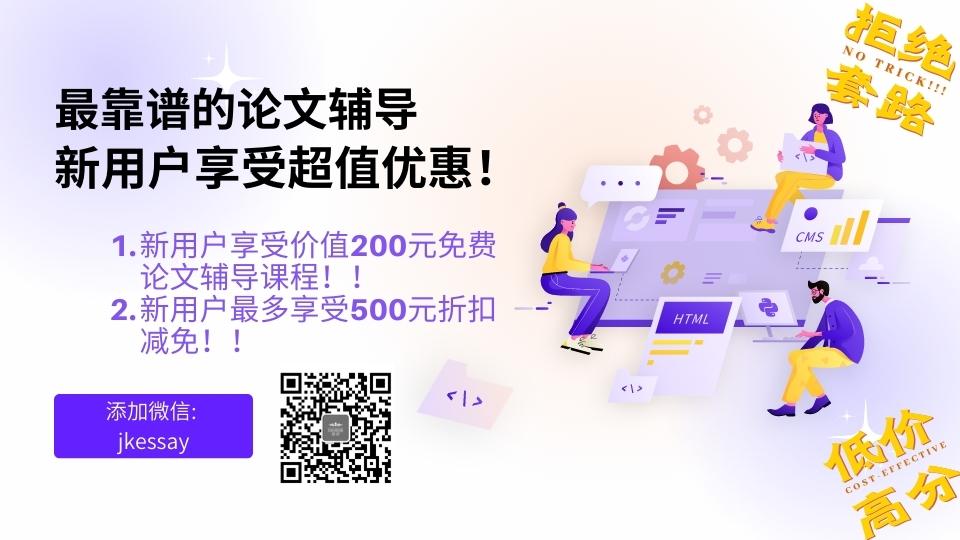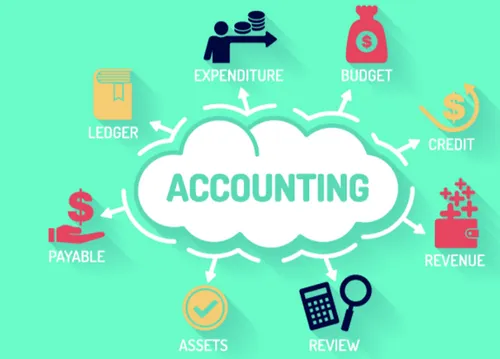
The Sao Paulo Case
ABSTRACT
The paper sets out to produce an outline customer relationship plan for a Brazilian hotel which has recently been taken over by a globally branded hotel chain. 
It begins with a review of selected literature which contains knowledge, techniques and ideas relevant to a customer relationship plan. Terms are defined within this section.
The final section contains the action plan, which derives from ideas in the literature review section.
1. Introduction
This report will consist of a concise, integrated customer relationship plan for Sao Paulo senior management with the specific aims of:
- reducing customer switching
- maintaining stakeholder relations in the service quality value chain
Within this plan there will be:
- an identification of the gaps in Sao Paulo’s current approach to relationship marketing planning
- a description of internal and external relationships which impact the hotel
- proposed marketing objectives to help relaunch and reposition the hotel brand
- suggested developments of the brand
- an outline service quality management programme
- an outline CRM system
- an outline integrated marketing communications programme
- an outline internal marketing communications programme
Input for the plan will be taken from the case material and the literature review which follows in section 2.
2. Literature Review
This section will review the literature in a structured way. The first part will draw on lecture notes, text books and journal articles to clarify and explain aspects of:
- strategic marketing and branding
- relationship marketing and customer relationship management
- service quality management
The second part will draw on three cases:
- The Ritz Carlton case
- Bergstrom Hotels
- Sao Paulo Hotel
2.1 Strategic Marketing and Branding
Piercy defines strategy as simply being about:
- Being best at doing those things which matter most to customers
- Building shareholder value by achieving superior customer value
- Finding new and better ways of doing things to achieve the first two[1]
If one accepts this no-nonsense definition it underscores the need for all companies to:
- Understand who your customers are and what matters to them
- Know how they perceive your service levels and what you must do to improve your performance
- Design and implement communication and management processes which make your strategy work
In other words you need a plan. The planning process is described in the lecture notes as beginning with a Mission Statement and ending with implementation and measurement & control. Before customer relationship objectives (the focus of the action plan below) can be identified and agreed the mission statement needs to be clearly understood as do the dynamics of the current market place. A SWOT analysis and Marketing Audit are effective tools for clarifying the company’s current position in the market, its performance so far and for suggesting possible changes in strategic and tactical moves.
In a services business this will lead to the development of a customer relationship plan, which will be underpinned by a detailed understanding of the various internal and external stakeholders with whom one needs to develop and build relationships.[2]
2.2 Relationship Marketing and Customer Relationship Management
“Relationship marketing concerns the shifting from activities of attracting customers to activities concerned with current customers and how to retain them. …At its core is the maintenance of relations between a company and its suppliers, channel intermediaries, public and customers.”[3] Focusing on retention is considered to be significantly more profitable than conversion of non-customers.
CRM is a system to make relationship marketing work. The US writer, George Day sees CRM as a customer-responsive strategy, which seeks to give companies competitive advantage by:
- Delivering superior customer value by personalising the interaction between company and customer,
- Demonstrating trustworthiness
- Tightening connections with customers
- Achieving co-ordination of complex capabilities (functions, resources) within the company[4]
Park Plaza International uses its new CRM system and global database to: “promote the hotels as a group, rather than an individually networked system, with targeted promotions and one-to-one marketing….Through company profiling we will be able to identify who the biggest backers of the group are and who should be given special treatment, so that we can target our promotions accordingly”[5]
Hwang and Chi[6] ,in their recent empirical study, highlight the fact that service personnel are the most important resource in the service sector and also the primary marketers. By helping to achieve customer satisfaction service personnel upgrade the entire performance of the organisation. The message to management is that they should engage in aggressive internal marketing to achieve and maintain a synergy of staff satisfaction and improved organisational performance.
2.3 Service Quality Management
Customers will be loyal to a hotel, or a branded hotel chain, if they are satisfied with the quality and value offered. It is therefore important for service providers to know what influences these customer perceptions.
Johnston suggests two approaches to understanding customers’ perceptions and judgements of service quality:
- The rational approach
- The incident-based approach[7]
The rational approach suggests that customers consciously or unconsciously use a weighted average, so that a high score on one attribute or factor may offset a low score on another, to arrive at an overall evaluation of personal satisfaction.
The SERVQUAL approach is based on the work of Parasuraman, Zeithamel and Berry[8] and sets out to measure customers’ perceptions of quality across 5 dimensions:
- Tangibles: physical facilities, equipment, appearance of personnel
- Reliability: abilities to perform the promised service dependably and accurately
- Responsiveness: willingness to help customers and provide prompt service
- Assurance: knowledge and courtesy of employees and ability to inspire trust and confidence
- Empathy: caring, individualistic attention provided by firm to customers
A third approach suggests that any single incident, delighting or satisfying, could, whatever the weightings given to the other transactions, result in an overall feeling of dissatisfaction or delight.
Another writer argues that “investment of time and money in quality improvement should concentrate on those areas of your business where the effort will have the greatest benefit”[9] Effort should not necessarily be directed to areas where you are worse than the competition if those factors are not so important to customers.
2.4 The Ritz-Carlton Case
R-C has a total quality approach to the business. They fix causes not problems, i.e. they think about processes and systems to prevent problems and to ensure continuous quality. They set up a system to understand the real needs of their customers, to ensure delivery of these needs, to make it work continuously and to communicate all this to the market – not just an image-driven approach, but one which was conscious of the “experience” which customers were seeking.
2.4 Bergstrom Hotels[10]
Bergstrom set up a total quality approach and system which was driven by senior management but acted on and supported by teams across the organisation. Vital components of the system are: training of all staff in internal customer relations, culture, process improvement and problem-solving, setting up and development of a data-base based on customer and employee surveys to drive improvement, open lines of communication and regular performance evaluation. Recognising staff contributions to quality of service was a key final element.
The case demonstrates that significant quality improvements can be achieved without significant investment and ongoing cost.
2.5 Sao Paulo Case
Sao Paulo is a recently refurbished hotel which is operating in a highly competitive market (with much price cutting) and unstable economy. It has recently been taken over by a hotel chain with a global brand name and a reputation for high service quality and the ability to build long-term relationships with stakeholders. It needs now to reposition itself in the Brazilian market such that it is clearly differentiated in stakeholders minds from the competition. Service must be the main differentiator, so an integrated customer relationship plan needs to be developed.
3. Action Plan for Improving Customer Relationships
3.1 Gaps in current approach
Sao Paulo needs both to retain the loyalty of its current customer base and to grow via new customer and intermediary relationships. Growth will probably come via extended use of new services (e.g. restaurants and bars) by current customers and attracting new, more focused customer segments. This needs to be spelt out in its overall mission and made explicit with regard to individual stakeholders.
3.2 External and Internal Stakeholders
Apart from the different customer segments important external stakeholders are: tour operators, airlines, travel agents and the many web-based hotel discounters. Local SP-based organisations such as the city hall and tourist office may also be influential in the communication of the hotel brand to intermediaries and potential customers.
The current relationship-building approach appears to be re-active and now needs to become focused and pro-active.
Important internal stakeholders are hotel employees – front-office staff and sales staff – and franchisees in the restaurants and bars. All need to be aligned with the culture of the refurbished and repositioned hotel.
3.3 Relaunching and Repositioning of the Brand
The SP hotel is now part of a global chain. Its service level will need to be aligned with the core brand values of GHG and these values will need to be communicated to all stakeholders and acted upon by internal stakeholders if the communicated brand image is to be consistent with delivery on the ground. Proposed marketing objectives are to: grow the current customer base by 20% by increasing spend per customer and by improving retention by 10%; focus on excellent, caring service at a fair price.
3.4 Service-Quality Programme
A customer survey should be carried out to establish which service attributes are important to customers. This should be linked to an assessment of the cost of correcting what goes wrong. The survey should be ongoing and reinforced by regular staff interaction with customers so as to identify any areas of dissatisfaction.
Overall customer relationship objective will be to: create in the minds of all customers an experience of being cared for by warm, friendly staff who have your best interests at heart and will do all that they can to offer you speedy and professional assistance.
This will be translated into specific CR objectives for the different stakeholders, all of whom will need to participate in service quality training programmes:
- Franchisees: communicate always in your words, dress and body language that you are a member of the SP team.
- Front-office staff: make the customer feel welcome, respected, valued and at home.
- Sales staff: communicate, warm, professional, helpful manner at all times, backed up by prompt follow-up.
Service standards: FRONT DESK:
- Always smile at customers
- Address by name wherever possible
- Apologise for even slightest delay
- Never keep customer waiting without apologising
- Always do what you promise to do
- Be sensitive to cultural differences
- Keep desk and hall area clean at all times
- Always ask if you can be of further assistance – sincerely
- Never argue with a customer
- Try always to exceed expectations
Service blueprint: Sales staff to CORPORATES (process service mix):
- Tangibles Dress smartly, speak warmly and professionally, ensure that all promotional materials are packaged and presented professionally
- Reliability Be punctual, deliver what you promise
- Responsiveness Exceed customer expectations with your response times and look always for creative solutions to difficult problems
- Assurance Be confident about the hotel and its qualities but radiate courtesy at all times. Avoid over-familiarity and use of christian names, unless requested to do so
- Empathy Avoid any remarks/comments about religion, race, culture. Be particularly sensitive to cultural differences and help people with language difficulties. Never make fun of anyone. Apologise for even the most minor errors
Service guarantee for empowering FRONT-LINE STAFF:
If a customer arrives after 19.00 and requests a rate reduction you may offer him/her a room at a rate 20% below normal rate
This service quality approach is in line with the realignment of the brand as a warm and caring hotel which offers fair prices.
3.5 CRM System
A CRM system needs to be developed for the global chain. It would aim to profile customers both in order to communicate with them more effectively and to ensure that service features are adapted to meet individual requirements where possible. It should be seen as a support for the warm and caring approach, not a replacement.
The communications programme would need to be consistent with, and integrated into, the CRM system.
3.6 Internal Marketing Programme
Staff are at the heart of hotel service and underpin customer perception of quality.
Training programmes must be run to ensure that all staff are aligned with the culture and attitudes of the hotel, are aware of service guidelines and have the requisite skills and knowledge. An appraisal and suggestions system will be introduced to help staff maintain requisite standards. Incentives will be introduced to encourage maintenance of these standards.
BIBLIOGRAPHY
Books
Barwise P. and Meehan S. (2004), Simply Better, Harvard Business School Press
Cerasale M. and Stone M.(2004), Business Solutions on Demand, Kogan Page
Johnston R. and Clark C. (2001), Service Operations Management, Prentice Hall
Piercy N. (2002), Market-led Strategic Change, Butterworth Heinemann
Journal Articles
Breiter D., Tyink S. and Corey-Tuckwell S. (1995), “Bergstrom Hotels; a case study in quality”, Journal of Contemporary Hospitality Management, Vol.7 No. 6
Brown T. (1997), “Using norms to improve the interpretation of service quality measures”, Journal of Services Marketing, Vol.11, No.1, p.80
Day G. (2000), “Tying in an Asset”, in Understanding CRM, Financial Times Editorial article, „CRM in Hotels“, in Leisure & Hospitality Business, September, 2001
Hwang I. and Chi D. (2005), “Relationships among Internal Marketing, Employee Job Satisfaction and International Hotel Performance”, International Journal of Management, Vol.22 No.2
Parasuraman A., Zeithamel V. and Berry L. (1988), “SERVQUAL: a Multiple Item Scale for Measuring Consumer Perceptions of Quality”, Journal of Retailing, Vol.64, No.1 Spring
Footnotes
[1] Piercy N. (2002), Market-led Strategic Change, p. 273
[2] Lecture Notes – Key Issues from the Marketing Audit to Prioritise Actions in a Relationship Services Marketing Plan
[3] Jobber D. (2004), Principles and Practice of Marketing, McGraw-Hill, p. 117
[4] Day G. (2000), “Tying in an Asset”, in Understanding CRM, Financial Times
[5] Editorial article, „CRM in Hotels“, in Leisure & Hospitality Business, September, 2001
[6] Hwang I. and Chi D. (2005), “Relationships among Internal Marketing, Employee Job Satisfaction and International Hotel Performance”, International Journal of Management, Vol.22 No.2, p.291
[7] Johnston R. And Clark G. (2001), Service Operations Management, Prentice Hall, p. 102
[8] Parasuraman A., Zeithamel V. and Berry L. (1988), “SERVQUAL: a Multiple Item scale for Measuring Consumer Perceptions of Quality”, Journal of Retailing, Vol.64, No.1 Spring
[9] Brown T. (1997), “Using norms to improve the interpretation of service quality measures”, Journal of Services Marketing, Vol.11, No.1, p.80
[10] Breiter D., Tyink S. and Corey-Tuckwell S. (1995), “Bergstrom Hotels; a case study in quality”, Journal of Contemporary Hospitality Management, Vol.7 No. 6








